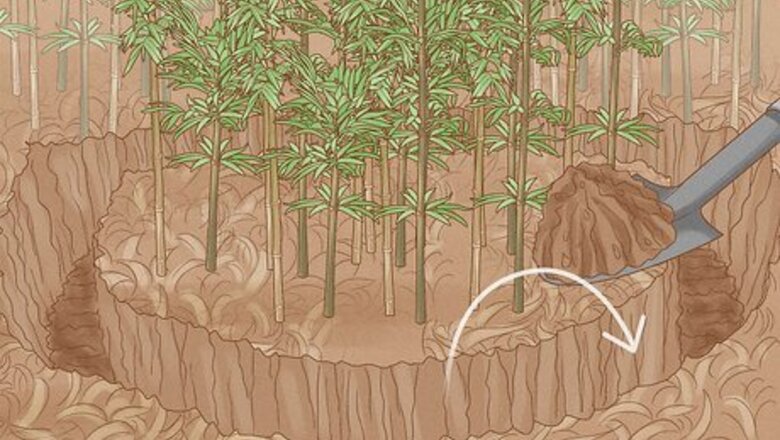
views
Removing Bamboo

Separate the bamboo you wish to kill. Bamboo culms, or stalks, are connected underground by rhizomes that grow quickly and close to the surface of the ground. By cutting through the rhizomes, you can separate and contain bamboo. The easiest method for cutting through rhizomes is to slice them using the tip of a heavy shovel. If you want to get rid of an entire grove of bamboo, you'll want to work from the outer edges inward. Separate the outer ring of bamboo first so that the bamboo gets contained in one area. Depending on how large a grove you're working with, this may take weeks, months or even years. This technique is also effective if you want to preserve a section of bamboo. Cut through the rhizomes that connect sections of bamboo so that they will no longer spread and continue growing together. Continue with the process of killing one section while allowing the other to live. You'll need to periodically cut back the remaining section to keep it from "running" underground and spreading to other areas.

Mow down the culms. Now that the rhizomes are cut, shear back the culms as close to the ground as possible. For thin stalks, you may be able to use a lawnmower or a lopper. For larger ones, you might have to break out a chainsaw. If you keep the area maintained over time, the bamboo won't have the chance to get quite so large again. You can cut the culms at any time of year, but doing it in the spring when you see new growth is a good time to get rid of bamboo. The bamboo is using its energy stores, and you'll be able to get rid of more of it more quickly than if you attempt to get rid of it while it's dormant.
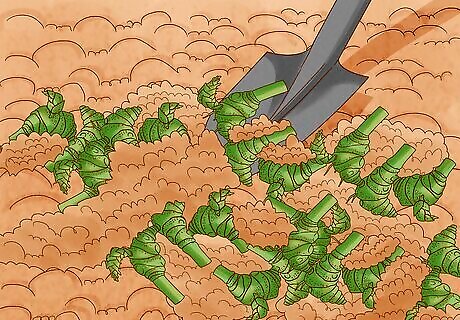
Dig out the rhizomes. Use a shovel to dig out the rhizomes and discard them. It's best to dig out the rhizomes the same day you cut down the culms; bamboo grows so quickly that waiting even a day or two will mean having new culms to cut down before you can get to work on the rhizomes. If the grove is too big to mow and dig all in one day, remember to work from the outer edges inward, gradually containing the grove as you work to get rid of it.
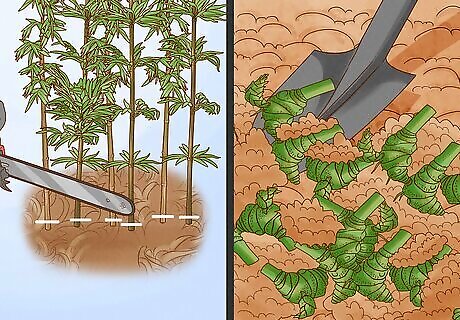
Keep mowing and digging until you don't see more shoots. You'll certainly miss some rhizomes the first few times around, so you'll need to use the same method several more times before the bamboo is completely gone. If you're working in the spring, the growth cycle will happen quickly, and you'll be able to get rid of a substantial amount of bamboo in a few days' time. During other times of year you may need to check the area for new growth every few weeks.
Keeping it from Coming Back
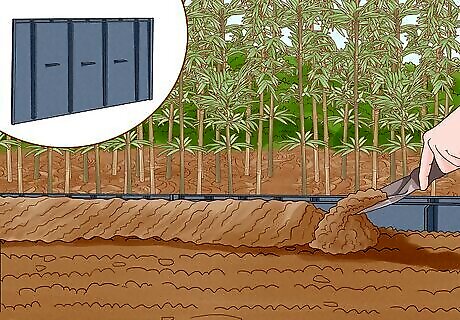
Use a root barrier. If your neighbor's bamboo continually creeps into your yard, you can keep it contained by installing a root barrier in the affected area. Rolls of plastic root barrier are available in home and garden stores. Metal and concrete barriers are also effective. You can dig a trench that will act as a barrier if you'd prefer not to use a non-porous material in your yard. Installing a pond or stream will also effectively block bamboo roots.
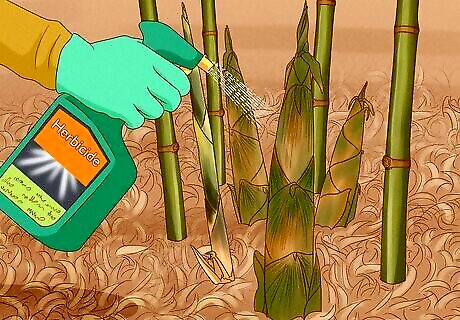
Consider using herbicides. Applying an herbicide to the leaves of bamboo shoots may help to prevent new growth from occurring. However, this doesn't always work as well as removing culms and rhizomes by hand. It might be tricky to find a chemical that works for the particular species of bamboo you're dealing with. Even if you do find one that works, you could end up killing other plants or wrecking your neighbor's treasured bamboo grove in the process. If you want to try an herbicide, use a glyphosate herbicide or a selective-grass herbicide directly on new bamboo growth each time it appears. A selective-grass herbicide is not as effective as the glyphosate type in controlling bamboo, but it may be used in flower beds or around ornamental shrubs. In order for the herbicide to be effective, it's important that you spray any new shoots as soon as they appear.
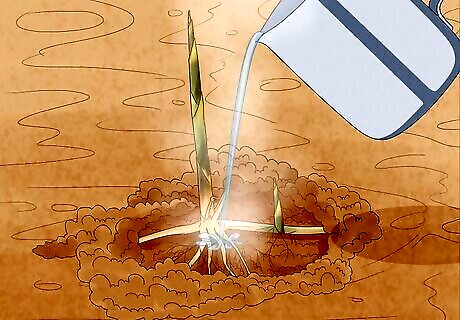
Pour boiling water over the roots. Using boiling water to kill bamboo is more natural and environmentally friendly than using an herbicide. Whenever you see new shoots growing in, boil water and dump it over the roots and shoots of the plant.
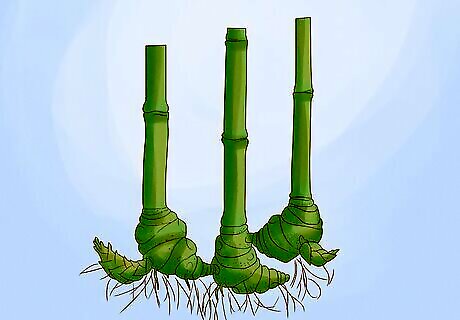
Buy a clumping bamboo species. Not all bamboo species "run" all over the yard; some actually stay contained when you plant them. Ask an expert at your local nursery to help you choose a species that won't take over your property.
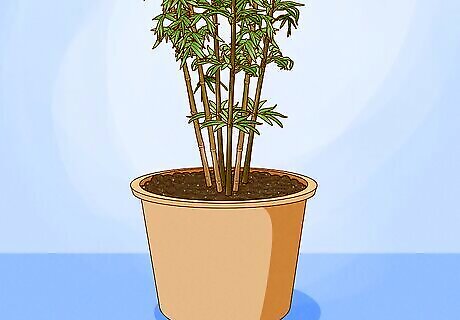
Plant bamboo in a container. This is a simple way to enjoy bamboo while making sure it doesn't get out of control. Most bamboo species do well in large containers that may be placed on your porch or in your yard.

















Comments
0 comment